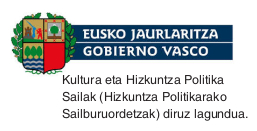Kant eta Mendelssohn: arrazoimena ezbaian
Abstract
The subject of reason, pursued by questions which it can not solve, is spreaded all over the work of Kant; and this is, precisely, Kant’s most confronted point with the Berliner Illustration, particularly with Mendelssohn. With no relation with experience, reason needs a guide for speculation, for which (historical) Revelation can not serve. While for Kant, the only guide for reason is its own internal necessity (Bedürfniss der Vernunft), for Mendelssohn (after a late recognition of reason’s perplexity), this roll is assumed by the common sense. From both positionings derives an important difference, which, in fact, is an opposition for Kant, between reasonable faith and faith of reason (vernünftiger Glaube vs. Vernunftglaube). This difference is often confused within texts and translations in latin languages. In the necessity for reason, theoretical reason and practical reason go linked.Downloads
Download data is not yet available.
License
Copyright (c) 1996 Uztaro

This work is licensed under a Creative Commons Attribution-NonCommercial-ShareAlike 4.0 International License.
Downloads
Published
1996-04-16
How to Cite
Azurmendi Otaegi, J. (1996). Kant eta Mendelssohn: arrazoimena ezbaian. Uztaro. Giza Eta Gizarte-Zientzien Aldizkaria, (16), 57–65. Retrieved from https://aldizkariak.ueu.eus/index.php/uztaro/article/view/3837
















